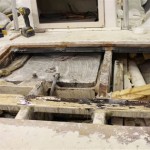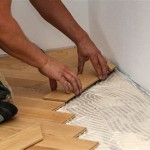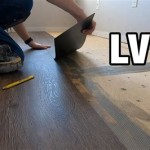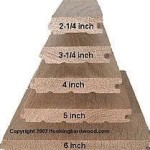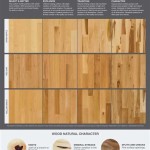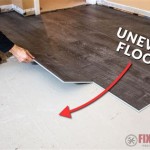Ipe Tongue and Groove Porch Flooring: A Comprehensive Guide
Ipe, often pronounced "ee-pay," is a South American hardwood renowned for its exceptional durability, strength, and beauty. Its density and natural oil content make it highly resistant to decay, insects, and wear, making it an ideal material for exterior applications, particularly porch flooring. Ipe tongue and groove porch flooring offers a combination of aesthetic appeal and long-lasting performance that is difficult to match with other materials.
This article delves into the characteristics, benefits, installation considerations, maintenance requirements, and cost factors associated with Ipe tongue and groove porch flooring. It aims to provide a comprehensive overview for homeowners, contractors, and anyone considering this premium flooring option.
The unique interlocking design of tongue and groove (T&G) flooring contributes to a smooth, even surface and enhanced structural integrity. The "tongue" on one board precisely fits into the "groove" on the adjacent board, creating a tight, secure connection. This minimizes gaps, prevents water intrusion, and contributes to a more stable and visually appealing porch surface.
Key Point 1: Exceptional Durability and Longevity
One of the primary reasons Ipe is favored for porch flooring is its exceptional durability. The Janka hardness rating, which measures a wood's resistance to denting and wear, typically ranges from 3,000 to 3,680 for Ipe. This is significantly higher than most other commonly used decking and flooring materials, including cedar, redwood, and even pressure-treated pine. This high hardness rating translates to a flooring surface that can withstand heavy foot traffic, furniture, and the elements without showing signs of wear and tear for decades.
Ipe's natural resistance to decay and insect infestation is another significant advantage. Its dense cellular structure and high oil content make it naturally resistant to fungal growth and deter insects such as termites and carpenter ants. This inherent resistance eliminates the need for chemical treatments, making it a more environmentally friendly option compared to pressure-treated wood alternatives. The absence of required chemical treatments also improves safety for inhabitants and pets, reducing concerns about exposure to potentially harmful chemicals.
Furthermore, Ipe's dimensional stability minimizes warping, cupping, or twisting, even under fluctuating temperature and humidity conditions. This stability is crucial for maintaining a flat, even porch surface and preventing gaps from forming over time. Proper acclimation prior to installation is still required to ensure stable initial conditions, this reduces the risk of post-installation movement.
The longevity of Ipe porch flooring is a significant factor in its overall value. While the initial cost may be higher than other materials, its extended lifespan and minimal maintenance requirements can result in lower long-term costs. A properly installed and maintained Ipe porch floor can last for 50 years or more, making it a cost-effective investment over the long run. This longevity can add significant value to a property and reduce the frequency of expensive replacement projects.
Key Point 2: Installation Considerations for Ipe Tongue and Groove
Installing Ipe tongue and groove porch flooring requires careful planning and execution. Due to its density and hardness, Ipe can be challenging to work with, requiring specialized tools and techniques. Pre-drilling is essential before driving screws or nails to prevent splitting the wood. Using high-quality stainless steel screws or hidden fastening systems is recommended to ensure a secure and long-lasting connection. Galvanized fasteners are not recommended due to potential reactions with the wood’s natural oils, which can lead to corrosion and staining.
Acclimation is a crucial step in the installation process. Ipe should be allowed to acclimate to the local climate conditions for several days or weeks before installation. This allows the wood to adjust to the humidity levels and minimize expansion or contraction after installation. Proper acclimation helps prevent gaps from forming between boards or buckling of the flooring surface.
Proper sub-framing is essential for a successful Ipe porch flooring installation. The sub-framing should be level, structurally sound, and appropriately spaced to provide adequate support for the Ipe flooring. Using pressure-treated lumber for the sub-framing is recommended to protect against moisture and decay. The spacing between joists should be determined based on the thickness of the Ipe flooring, with closer spacing required for thinner boards.
Ventilation is also an important consideration. Adequate ventilation beneath the porch floor helps to prevent moisture buildup and promote air circulation, which reduces the risk of decay and insect infestation. Ensuring proper airflow is particularly important in humid climates or areas prone to excessive moisture. Incorporating ventilation openings or installing a ventilated underlayment can help to maintain a dry and healthy environment beneath the porch floor.
Installing Ipe tongue and groove flooring typically requires specialized tools, including carbide-tipped saw blades, pre-drilling bits, and high-quality fasteners. Using the correct tools and techniques can significantly improve the quality and efficiency of the installation process. Hiring a professional contractor with experience installing Ipe flooring is recommended to ensure a successful and long-lasting result. An experienced contractor will have the necessary knowledge, skills, and equipment to handle the unique challenges of working with Ipe.
Key Point 3: Maintenance and Upkeep of Ipe Porch Flooring
While Ipe is a naturally durable material requiring minimal maintenance, some basic upkeep is necessary to preserve its beauty and extend its lifespan. Regular cleaning with a mild soap and water solution is recommended to remove dirt, debris, and mildew. Using a brush or mop to scrub the surface and then rinsing thoroughly with water is usually sufficient to keep the flooring clean. Avoid using harsh chemicals or abrasive cleaners, as they can damage the wood's surface.
Applying a UV protectant oil finish can help to maintain the natural color of Ipe and prevent it from fading or graying over time. Ipe will naturally silver or gray if left unfinished, but the application of a UV inhibiting oil can protect the wood from the damaging effects of the sun's ultraviolet rays. The frequency of application depends on the level of sun exposure and the type of finish used. Typically, reapplication is needed every one to two years.
Inspecting the flooring regularly for any signs of damage, such as cracks, splits, or loose boards, is crucial. Addressing any issues promptly can prevent them from escalating into more significant problems. Replacing damaged boards or tightening loose fasteners can help to maintain the structural integrity and appearance of the flooring. Early intervention can save significant time and expense over the long term.
Protecting the flooring from scratches and dents is also important. Using furniture pads under heavy objects and avoiding dragging furniture across the surface can help to prevent damage. Placing mats or rugs at entrances can help to trap dirt and debris, reducing the amount of wear and tear on the flooring. Taking these precautions can help to preserve the beauty and longevity of the Ipe porch flooring.
While Ipe is naturally resistant to decay and insects, it is still important to maintain proper ventilation beneath the porch floor to prevent moisture buildup. Ensuring adequate airflow can help to prevent fungal growth and deter insect infestation. Checking and clearing any obstructions that may be blocking ventilation openings is recommended. Addressing any drainage issues around the porch can also help to prevent excessive moisture from accumulating beneath the floor.
The cost of Ipe tongue and groove porch flooring is generally higher than other common decking materials, such as pressure-treated pine or composite decking. However, the cost must be weighed against the superior durability, longevity, and aesthetic appeal of Ipe. The initial investment in Ipe flooring can be offset by its minimal maintenance requirements and extended lifespan, resulting in lower long-term costs. Factors influencing the cost of Ipe includes wood thickness, profile (groove patterns), total square footage needed, and grade. Sourcing from a reputable supplier is advised.
Choosing Ipe tongue and groove porch flooring can be a significant investment in the beauty and value of a home. By understanding the characteristics, benefits, installation considerations, and maintenance requirements of Ipe, homeowners can make informed decisions and ensure a long-lasting and visually appealing porch surface. With proper installation and care, Ipe can provide decades of enjoyment and enhance the curb appeal of any property.

Ipe Tongue Groove Porch Decking Gallery

Ipe Tongue Groove Porch Decking Gallery

T G Porch Flooring Ett Fine Woods

Ipe Tongue Groove Porch Decking Gallery

Tongue Groove Ipe Decking Ipedepot

Ipe Porch Deck Ett Fine Woods

Ipe Tongue Groove Porch Decking Gallery

Beautiful 1 X 6 Tongue Groove Ipe Hardwood Decking With Frame Border Double Feature Strip Intex Hamp Decks And Porches Porch Flooring Stone Deck

Ipe Porch Deck Ett Fine Woods

Wood Porch Flooring Tongue And Groove Decking
Related Posts

